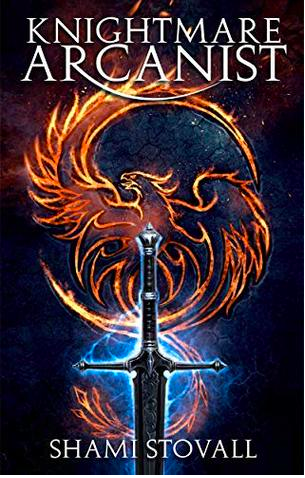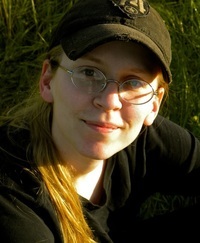Mary Anne Yarde's Blog: The Coffee Pot Book Club , page 109
December 26, 2019
The History of New Year’s Eve by Emma Lombard #History #NewYearEve #amwriting @LombardEmma
1. New Year’sHow January 1 became New Year’s Day. Did you know that we have Julius Caesar to thank for this?
2. The Ancient Origins of New Year’s CelebrationsStarting with the earliest recorded New Year’s festivities from 4000 years ago in Babylon. As with most ancient traditions, they have their roots in some sort of harvest or astrological origins.
3. New Year’s Day — The History, Traditions and CustomsAn interesting insight into some of the foods traditionally eaten on this holiday. And let’s not forget good old champagne—created, as most good things, by pure accident back in the 17th century.
4. The History of Popular New Year’s TraditionsA lovely look into some of the New Year’s traditions from around the world, including Auld Lang Syne and the Times Square Ball Drop.
5. The Mysterious Origins of the New Year’s Eve KissThe mid 19thcentury Germanic origins of ringing in the US New Year with a kiss.
Making Your Own New Year’s Resolutions

With the New Year just around the corner, now is the perfect opportunity to think of some resolutions! Try and stick to a realistic goal that is achievable, that way, you’ll have far more success at sticking to it and accomplishing it.
Make yourself a list of mini goals that you can tick off as the year goes past.
If you’re an author, here’s a FREE PRINTABLE New Year’s Resolution Checklist for Authors in 2020 — a gift for you from Historical Fiction author, Emma Lombard. With 45 goals to keep you motivated and on track with your writing, 2020 is going to be a great year!
New Year’s Resolution Checklist for Authors in 2020
45 goals to keep me motivated and on track with my writing. emmalombardauthor.com
Print off the Checklist HERE!
If you’re a new author just starting out on social media and one of your New Year’s resolutions is to start a Twitter account in the New Year, check Emma’s most popular blog post: Twitter Tips for Newbies.
Follow Emma’s authoring journey about her upcoming historical adventure, Discerning Grace, by subscribing to Emma’s By the Book monthly newsletter—with exclusive content just to that publication.
So, what are you planning for your 2020 New Year’s resolutions? Tell us below in the comments.

2. The Ancient Origins of New Year’s CelebrationsStarting with the earliest recorded New Year’s festivities from 4000 years ago in Babylon. As with most ancient traditions, they have their roots in some sort of harvest or astrological origins.
3. New Year’s Day — The History, Traditions and CustomsAn interesting insight into some of the foods traditionally eaten on this holiday. And let’s not forget good old champagne—created, as most good things, by pure accident back in the 17th century.
4. The History of Popular New Year’s TraditionsA lovely look into some of the New Year’s traditions from around the world, including Auld Lang Syne and the Times Square Ball Drop.
5. The Mysterious Origins of the New Year’s Eve KissThe mid 19thcentury Germanic origins of ringing in the US New Year with a kiss.
Making Your Own New Year’s Resolutions

With the New Year just around the corner, now is the perfect opportunity to think of some resolutions! Try and stick to a realistic goal that is achievable, that way, you’ll have far more success at sticking to it and accomplishing it.
Make yourself a list of mini goals that you can tick off as the year goes past.
If you’re an author, here’s a FREE PRINTABLE New Year’s Resolution Checklist for Authors in 2020 — a gift for you from Historical Fiction author, Emma Lombard. With 45 goals to keep you motivated and on track with your writing, 2020 is going to be a great year!
New Year’s Resolution Checklist for Authors in 2020
45 goals to keep me motivated and on track with my writing. emmalombardauthor.com
Print off the Checklist HERE!
If you’re a new author just starting out on social media and one of your New Year’s resolutions is to start a Twitter account in the New Year, check Emma’s most popular blog post: Twitter Tips for Newbies.
Follow Emma’s authoring journey about her upcoming historical adventure, Discerning Grace, by subscribing to Emma’s By the Book monthly newsletter—with exclusive content just to that publication.
So, what are you planning for your 2020 New Year’s resolutions? Tell us below in the comments.

Published on December 26, 2019 20:00
A Conversation with author, Angelina Kalahari #Singing #performers #breathingtechniques @angelinakalhari
Published on December 26, 2019 18:30
December 24, 2019
Merry Christmas from The Coffee Pot Book Club #Christmas #Books
Merry Christmas from The Coffee Pot Book Club

We will be back on the 27th for more Christmas in the Time of….
Published on December 24, 2019 20:00
December 23, 2019
Join Historical Fiction author, Anne O’Brien, as she takes a look at the Solemn Christmas of 1461 #History #Christmas @anne_obrien
 A Solemn Christmas 1461 ADBy Anne O’Brien
A Solemn Christmas 1461 ADBy Anne O’BrienCecily Neville, Dowager Duchess of York, King's Mother, made the decision in December 1461 not to celebrate Christmas and the New Year at Greenwich with her son Edward, the newly crowned King Edward IV of England. Instead she celebrated at the palace of Eltham. It was one year since she was widowed.
 Cecily Neville: Wikimedia.
Cecily Neville: Wikimedia.Christine de Pisan advised that 'a wise princess who is widowed' should stay in seclusion for a time, with only a little daylight, and dressed sombrely 'according to decent custom'. Always politically aware, this was not possible for Cecily, however much she might have wished a time of quiet mourning after the tragic death of Richard, Duke of York. Whereas once she might have seen herself as 'Queen in Waiting', her new role was that of supporting the rule of her son through intercession and good advice as King's Mother. Cecily knew that it would be important for her to see and be seen at this festive time of year when her son's reign was still so new. To shut herself away would not be the choice of 'a wise princess'.
 Richard Duke of York.
Richard Duke of York.We know that Cecily must have marked the occasion at Eltham with the usual high degree of medieval feasting and merriment since it was placed on record by the London Chronicler of the day. Although no details remain, it is presumed that a feast was held, all seemly and dignified. Strict protocol was laid down in the Ryalle Book about the seating and serving of guests appropriate to Cecily's household on special occasions. Cecily would not share dishes with anyone except her younger sons. Any bishop present would be seated at the upper end of Cecily's table whereas the nobility took the seats at the lower end. Cecily's daughter Margaret - later to become Duchess of Burgundy - would be seated above all the Duchesses of England, in spite of her lack of title at this time.
We presume that as well as the feasting, the usual games and festivities, with music and dancing, were held to mark the birth of the Christ Child.
But midway through this festive time, Cecily pursued a distinct change in atmosphere. The 30th day of December was the first anniversary of the death of Richard, Duke of York, at the Battle of Wakefield where he and their son Rutland were both decapitated, their heads placed with that of Salisbury, Cecily's brother, on Micklegate Bar in York. A paper crown adorned York's brow in a final act of malicious humiliation.
 Micklegate Bar.
Micklegate Bar.To mark this sombre occasion Cecily held the 'year's mind', the solemn Requiem Mass on the anniversary of her husband's death. Such a service would by custom be held in the church where the body of Richard was buried, but on this occasion, this was not so. Richard's body, recovered from the battlefield, had been hurriedly buried in the Priory of St John the Evangelist at Pontefract, where it still lay with the earthly remains of Rutland and Salisbury.
Instead, Cecily held the 'year's mind' in great splendour in Old St Paul's Cathedral. A hearse covered with a pall was set up before the High Altar with banks of candles burning around it. The funeral rites were then repeated as if in the corpse's presence. Thus it was as if the dead were re-called, being brought before the living once more, for prayer and and a final re-commital to the grave.
 St Pauls: Wikimedia.
St Pauls: Wikimedia.It must have been a magnificent memorial, although the names of those who attended were not recorded. We know that Cecily spent one hundred and fifty pounds on the candles to illuminate the pall-covered hearse, a vast sum in 1461 and indicative of the impression she wished to make.
What a bitter experience this was for the Dowager Duchess as she looked back over her year of mourning, in spite of the victory and coronation for her son Edward. Did she find some consolation in the severe words of the Requiem, in the sacred ceremony with its weight of death and judgement and all its candles. A heart-wrenching occasion before she returned to Eltham to the festivity of New Year's Gift Giving.
What we do know is that the Duchess was not satisfied with the burial of the Duke of York and her son in Pontefract. It was her intention to bring their bodies home to Fotheringhay, to be buried there in the most important of Yorkist bases. This was not achieved until sixteen years later.
A Tapestry of Treason
By Anne O’Brien

Her actions could make history – but at what price?
1399: Constance of York, Lady Despenser, proves herself more than a mere observer in the devious intrigues of her magnificently dysfunctional family, The House of York.
Surrounded by power-hungry men, including her aggressively self-centred husband Thomas and ruthless siblings Edward and Richard, Constance places herself at the heart of two treasonous plots against King Henry IV. Will it be possible for this Plantagenet family to safeguard its own political power by restoring either King Richard II to the throne, or the precarious Mortimer claimant?
Although the execution of these conspiracies will place them all in jeopardy, Constance is not deterred, even when the cost of her ambition threatens to overwhelm her. Even when it endangers her new-found happiness.
With treason, tragedy, heartbreak and betrayal, this is the story of a woman ahead of her time, fighting for herself and what she believes to be right in a world of men.
Amazon UK
Anne O’Brien
 Anne O’Brien was born in West Yorkshire. After gaining a BA Honours degree in History at Manchester University and a Master’s in Education at Hull, she lived in East Yorkshire for many years as a teacher of history.
Anne O’Brien was born in West Yorkshire. After gaining a BA Honours degree in History at Manchester University and a Master’s in Education at Hull, she lived in East Yorkshire for many years as a teacher of history.She now lives with her husband in an eighteenth-century timber-framed cottage in the depths of the Welsh Marches in Herefordshire, on the borders between England and Wales, where she writes historical novels. The perfect place in which to bring medieval women back to life.
Anne loves to hear from readers, you can find her: Website Facebook Twitter



Published on December 23, 2019 20:00
December 22, 2019
Dog Days and The Flanders Seamstress by Dominic Fielder #Christmas #History #FrenchRevolution @Kings_Germans
 Dog Days and The Flanders SeamstressBy Dominic Fielder
Dog Days and The Flanders SeamstressBy Dominic FielderHappy Nivôse Chien! When’s the last time that you wished anyone that? Hopefully, never! In fact, anyone using the French revolutionary calendar, from which these words are taken, wouldn’t have wished anyone this greeting anyway. Nivôse covers the days from 21st December to 21st January, Chien (Dog) the name giving to the 25th. Celebrating Christmas in 1793 France, at the height of the Terror, was a dangerous, counter-revolutionary act.
Much has been written about the power struggle between the Church and the revolutionary governments, between 1789 and until the signing of the Concordat, between Napoleon and Pope Pius VII, which found a way for Church and State to co-exist. Some historians have viewed this agreement with a degree of scepticism, Napoleon having a view to the days ahead, when an imperial coronation at the hands of the Pope would offer him legitimacy, but the Concordat did provide a framework for the future relationship with the Church into the start of the twentieth century.
But those are the days ahead.
In the raw moments of 1793, the year in which both Louis XVI and Marie Antionette are executed, the struggle to control the Church and therefore the souls of France, is very real. The Church had been the significant landowner and a source of great wealth. By 1790, land had been seized and sold to the public and priests subordinated to governmental controls. In August and September 1792, there had been a series of demonstrations across France. Churches had been raided; priests put to death; iconography destroyed; and the tearing down of crosses and bells, clear and potent signs of the ridding of religious control.
How much widespread support this had is again open to question, certainly in the Vendée, religion and support for the Bourbon lineage where the major drivers to the bitter civil war that raged there. Yet in other parts of France too, priests who refused to submit to control from the National Assembly at Paris, continued to offer communion where parishioners demanded it. The price for such rebellion, at the height of the Terror, was an appointment with the guillotine, dubbed the National Razor!
France and the areas that her armies controlled had become a bizarre and bloody Narnia, where it was winter but Christmas never came. Yet all around her borders, like the fur coats in the wardrobe, lay a different world but one that was fraught with danger to reach. At the time of writing this, I’m considering how one of my characters, a French Vivandière, might leave the relative comfort of the winter camp of the army of the North, and risk a journey across the no man’s land between the French and British armies, in order to return to her home in Bruges.
Emmeline Chastain, a seamstress, left Bruges to follow her husband when he enlisted in the Army of the North, when the French swept across Flanders and into the Dutch United Provinces, the previous year. But his revolutionary fervour had bled out of his body on the battlefield of Hondschoote.

A month later, still wrapped in grief and lost in thought, she slips on the edge of a riverbank and falls into the Lys. French and Hanoverian piquets who have both come to the river to draw water, look on in helplessness. Her saviour, Erich von Bomm, is an occasional scoundrel but war has proved him brave too. Their first meeting is all too brief and the second promises to be as lively, but at least in that they will have a chance to exchange a few words and the spark of something will ignite.
In a series that has plenty of characters, introducing another one is always questionable but 1794 isn’t going to be a particularly good year for the King’s Germans. Emmeline will add some light for von Bomm initially, the best late Christmas gift that I could offer to him. She’s drawn in part from two historical events.
In one, a seamstress, who has obtained tickets to a society ball, is tricked out of her evening of dancing and thrown out onto the streets by a British Guards officer. Another is the story of three women dragged into the streets by the citizens of Bruges, when the French troops capture the city later in 1794. Dealt with much in the style of those who collaborated with the Germans in parts of France, their heads were shaved, before being led to a scaffold and executed. In a city where so many people had lived peaceably alongside British and Hanoverian soldiers, the three seemed to have been offered as tokens of sacrifice in the dying days of the Terror.
I’m not sure that I can bring myself to let that be Emmeline’s fate and I hope that there is a way out. After all, that’s the joy of writing fiction. We all have our dog days, but Emmeline and Erich can enjoy all that Spring offers before the Summer heat threatens both their lives and a future together.
Before then there is much to do, and I must disappear back into that wardrobe to explore the landscape of a nation that has banned Christmas and replaced it with its own dog day. I would like to wish you a very Merry Christmas from myself, Sarah, Neil, Neil, Jennie and Adrian who contribute to make the King’s Germans stories what they are.
See you in 2020..and 1794…
The Black Lions of Flanders (The King's Germans Book #1)By Dominic Fielder

In the war of the First Coalition, friend and foe know one simple truth: trust your ally at your own peril.
February 1793.
Private Sebastian Krombach has joined the army to escape the boredom of life in his father’s fishing fleet. Captain Werner Brandt yearns to leave his post and retire into civilised society and Lieutenant Erich von Bomm wants nothing more than to survive his latest escapade that has provoked yet another duel. Each man is a King’s German; when they are called to war, their lives will become inextricably linked.
The redcoats of the 2nd Battalion, 10th Regiment, must survive the divisions that sweep through their ranks before they are tested in combat. On the border of France, the King’s Germans will face an enemy desperate to keep the Revolution alive: the Black Lions of Flanders.
Amazon US • Amazon UK
The King of DunkirkThe King’s Germans Book #2
By Dominic Fielder

May 1793: The French border.
Valenciennes, Paris then home! Every common soldier knows the popular refrain so why can’t the commanders see sense?
The protracted siege of Valenciennes exposes the mistrust between the allies. National interests triumph over military logic. The King’s Germans find themselves marching north to the coast, not east to Paris. Dunkirk has become a royal prize, an open secret smuggled to the French, who set a trap for the Duke of York’s army.
Lieutenant Erich von Bomm and Captain Werner Brandt find themselves in the thick of the action as the 14th Nationals, the Black Lions, seek their revenge. In the chaos of battle, Sebastian Krombach, working alongside Major Trevethan, the engineer tasked with capturing Dunkirk, must make a dreadful choice: to guide a battalion of Foot Guards to safety across the Great Moor or carry a message that might save the life of a friend.
The King’s Germans and the Black Lions do battle to determine who shall
be crowned the King of Dunkirk.
Amazon UK • Amazon US
My very own ‘brief encounter’…the first meeting of Emmeline Chastain and Erich von Bomm, from ‘The Queen of the Citadels’, due out in Spring 2020…
CHAPTER FOURThe French Vivandière.Menen: 19th October 1793
The two groups of soldiers eyed one another warily across the narrow expanse of the Lys, slate grey and sluggish. Heavy clouds threatened an abundance of rain but for now, empty canteens and a morning’s thirst needed sating, whatever the colour of uniform. The grenadiers moved forward warily at first but once the French piquets had stepped away from their side of the bank, the unspoken ritual began. “Eyes peeled please, Sergeant Keithen. I might attempt a little parlez today.” Von Bomm hoped that his voice betrayed very little emotion but he sensed there was something amiss on the French side of the river, but for now he couldn’t place it. “Fill mine will you, Pinsk? Try and avoid any yellow-looking water. I’m sure it tasted off, yesterday!” he winked to the tall grenadier, who had become his messenger and kit-man. There was something likeable about Pinsk, country wisdom and caustic wit; a good NCO when the time came. The Grenadier captain flashed his smile and handed Pinsk his water bottle, then settled back on a long-dead tree trunk to survey the scene. It differed little from the last three days, when this dance had unfolded. The French scouts who held the far bank had allowed the redcoats to take water from the river. Had either wanted to, a messy musket duel could have broken out, with both sides retreating to the tree-lines along the riverbank, but there were no generals to order such futility. Instead, a form of peace had broken out. Soldiers blighted by campaigning into the late autumn had little desire to look for battles, surviving was battle enough.The French were more numerous than yesterday, certainly the vivandières were, and von Bomm fought his natural inclination to run an appreciative eye over the forms hauling water into buckets that were then fixed onto yokes and carried away to wherever the French were camped. Pinsk loped back into view and handed the canteen to his officer. Nodding his appreciation, von Bomm tugged at the cork, in readiness to quench his thirst.“Notice anything different today, Pinsk?”The grenadier peered through thick spectacles and for a moment, von Bomm wondered whether the boy could see the far bank, let alone shed light on the mystery. “More French than yesterday sir. Same battalion, I’m sure but a stronger guard. You can’t see them from here but I’m sure I saw men with axes in the tree-line.”Pinsk jabbed a spindly finger in the direction of a cluster of trees on the opposite bank. Then it struck von Bomm.“Pinsk, do you have your pipe and tobacco?”“Not again, sir?”“A double return when you get back to camp!”“You said that yesterday, sir…and the day before.”“It’s for good King George, Pinsk. Where’s your sense of duty?”Whatever the grumbled reply, it was lost in the flurry of smoke as Pinsk expertly brought the pipe to life and stole a draw or two before handing it over.“Double, sir?”“On my word as an officer and a gentleman!”Pinsk caste a wry look.“On my word as an officer then,” von Bomm winked. “Find Sergeant Keithen, tell him I’m going to parlez and that I want the men to be ready to withdraw should matters turn sour.”“Would you like me to escort you sir? Do you think there will be trouble?”“No, I think I can manage to parlez without causing a fracas. But thank you for thinking of my welfare.”Pinsk itched at his scalp. “Was just thinking about my pipe, sir. And my tobacco.”The grenadier officer smiled then turned on his heels and waved the pipe above his head, to attract the attention of an officer who he had already spotted on the opposite bank. The conversation with his French counterpart yielded little, the man spoke no German and von Bomm’s French while adequate, seemed in a different dialect to that of a deeply bronzed officer who clearly hailed from somewhere far to the south of Paris. Instead, von Bomm turned his mind back to the matter at hand. He stood perched on a rocky outcrop in the middle of the Lys, a no man’s land between the two sides. The soil was sodden, the passage down to the river bank had been one of ample opportunity for misfortune, as von Bomm had felt his boots slide in the thick grass. Even with the river swollen, crossing to meet the Frenchman had been an easier task than the last two days. There were more stones added to the narrow chain which threaded from one side to the other. Then his eyes spotted them, two giant timber piles driven into the ground, French sentries stood around them, trying to obscure them from view, but the coils of rope made their purpose obvious. Perhaps the bluecoat was aware that the conversation had lulled, and that von Bomm had made a connection with events on the far side of the river. The Frenchman straightened himself and made to hand back the pipe, keeping the ball of tobacco as a gift to be enjoyed at his leisure, when a brief scream pierced the morning, followed by a splash and the thrashing of a body in distress. One of the vivandières had slipped on the perilously damp grass and fallen head first into the Lys. The heavy winter coat and the ropes from the buckets had become wrapped around her. A consequence of the French improving the stone walk way across the river was a deep pooling of water into which the woman had fallen, and it was obvious to von Bomm that she would drown in a matter of moments. Without thinking, he unleashed sword belt, tunic and boots and threw himself into the grey mass of river, in the direction of where the woman had disappeared. The chill of the water was like a succession of punches to the ribs, and von Bomm pushed forward through the burning pain only with the greatest of effort. He had been a strong swimmer in his childhood years, but the warm summer lakes around Hanover were nothing like the river that dragged and pulled at him, blinding him into numb submission. With one last desperate forward stroke, his hand brushed the material of a coat, then he felt the shape of a torso. Fighting with all his might, he tried to propel himself and the woman to the surface, just a foot or so above him. The distance might just as well have been fathoms. Current, and the shocking cold of the Lys consumed his energy. From the world above, hands reached down and grabbed at von Bomm and the woman, and then he was free of the water, sucking in air which burned his lungs with a pain as intense as that day in Rumes. A prostrate body was hauled unceremoniously onto the wet grass beside him; the woman looked more dead than alive. The grenadier officer felt his redcoat being placed around his shoulders and a small flask of brandy thrust into his hands, with the instructions to drink. He spluttered as the liquid tempered the burning sensation with a scorching bite of its own. All the while, fellow vivandières pinched and plucked at the face of their comrade; brandy was poured onto lips that were a deathly blue; and rich red hair saturated to dark auburn, fell about the shoulders of a body, to which a gossamer transparent chemise held no secrets. Von Bomm heard the French officer call to the women who attempted to crowd around to make way. As the bluecoat waved the women back, the lifeless body jolted; a huge gasp of breath followed with a retching as her face tilted towards von Bomm’s and a stream of water was ejected in a series of deep coughs. All sense of order was lost as the vivandières swarmed around the figure again, returned to them from the dead. For the briefest moment von Bomm caught her gaze. Eyes as auburn as her soaked hair, met his. There was no recognition, no understanding, but there was a vulnerable beauty. Then she was gone, carried away by the woman who were more used to carrying away the dead and dying in the army that they followed. Instead there were words of rejoicing and the sound of a battle hymn that von Bomm at heard before, on the field of Hondschoote. He felt himself being hauled from the floor and the French officer offered a hand and then deciding that such formality was uncalled for, squeezed von Bomm in the tightest of bear hugs. Others came to offer congratulations and von Bomm found himself staring at one man, a giant sapper with a thick beard, greying at the edges. The soldier’s sleeves were soaked up to his shoulders; von Bomm nodded an acknowledgment and his own thanks. As the sapper stepped away, other shapes in the treeline became visible, confirming the King’s German’s earlier suspicions. The French officer realised that the redcoat had seen more than he should. Moments later, his arm was on von Bomm’s shoulder, guiding him back towards the stepping stones. On the far bank, sergeant Keithen and his company were stranded onlookers. “Mon ami, your bravery does your uniform honour.” The French officer offered his hand, formality having returned to proceedings. The was a pause and the man made to turn away and then stopped. “We have watched one another for the last three days, no? Tomorrow, find another job for your men. Bon chance, captain.”With that, the Frenchman bowed his head and turned away, barking out orders to his men. Looking again at the treeline, von Bomm watched him go, then he turned and crossed the stones back to the safety of his side of the riverbank.“You alright sir?” Sergeant Keithen greeted the sight of his officer, returned from the French side of the bank in a uniform that stuck to his skin, as a great mist of steam rose from von Bomm. “Fine morning for a swim, of course, but we need to get you out of those wet clothes. Can’t have you dying on me, sir. The men wouldn’t like that!”Von Bomm was too weary to resist as his red coat was pulled from his body and Keithen barked his own orders at men who gawped at their officer being stripped bare. A fresh shirt was found from a soldier’s pack, along with a pair of white linen trousers. Old socks were donated and Flanders clogs placed on von Bomm’s feet. He looked more peasant than nobleman, but as Keithen rattled off a series of commands, the company began to form up, ready for the order to march, he felt the weariness lift a little from his body.A tall figure shuffled beside him.“Beggin’ your pardon, sir, but… can I have my pipe?”Von Bomm looked up blankly at the figure that towered above him.“Your pipe?” von Bomm offered the boy his hand and Pinsk hauled his captain to his feet. He checked his pockets and then was faintly aware that he had dropped it in the haste of undressing.“I’m sorry, Pinsk. I really am, but it’s gone.”Pinsk nodded slowly and shrugged his shoulders; von Bomm watched the tall redcoat traipse towards the forming column, almost certain that he heard the boy mutter something about ‘bloody officers’. A sort of normality had returned to the ranks on this side of the river too. Von Bomm called his sergeant to him. “Back to camp when you are ready, sergeant. We have received a warning from our friend on the far bank. The French have a gun battery in that treeline and I think they plan to cross here tonight or tomorrow. And I owe Mr Pinsk a new pipe and some tobacco. You may decide for yourself which of those pieces of news is the most pressing.”A minute later, the redcoats were gone. Nothing marked their passing, other than a series of muddied footprints which led back into the trees and towards the safety of their own camp.
Dominic Fielder
 The King’s Germans is a project that has been many years in the making. Currently I manage to juggle writing and research around a crowded work and family life. The Black Lions of Flanders (set in 1793) is the first in the King’s Germans’ series, which will follow an array of characters through to the final book in Waterloo. The King of Dunkirk will soon be released and I hope that the response to that is as encouraging as the reviews of Black Lions have been.
The King’s Germans is a project that has been many years in the making. Currently I manage to juggle writing and research around a crowded work and family life. The Black Lions of Flanders (set in 1793) is the first in the King’s Germans’ series, which will follow an array of characters through to the final book in Waterloo. The King of Dunkirk will soon be released and I hope that the response to that is as encouraging as the reviews of Black Lions have been.While I’m self-published now, I have an excellent support team that help me to produce what I hope is a story with professional feel, and that readers would want to read more than once. My family back-ground is in paperback book sales, so I’m very keen to ensure that the paperback design is something that I would be proud to put on my bookshelf.
I live in just outside of Tavistock, in Devon where I enjoy walking on the moors and the occasional horse-riding excursion as both inspiration and relaxation.
Connect with Dominic: Facebook • Twitter • Instagram.
Published on December 22, 2019 20:00
December 20, 2019
#BookReview — Breathing for Confidence: Your Voice, Your Superpower by Angelina Kalahari #Singing #performers @angelinakalhari
Published on December 20, 2019 21:00
Christmas in the time of the Vikings: Santa Odin and the Night of the Mothers by Sarah Dahl #Christmas #History #Vikings @sarahdahl13
 Christmas in the time of the Vikings: Santa Odin and the Night of the MothersBy Sarah Dahl
Christmas in the time of the Vikings: Santa Odin and the Night of the MothersBy Sarah Dahl
Since the early 10th century, the Viking Jólablót is held on December 25, and the Norwegian King Hákon the Good made it a law that “everyone was to have ale for the celebration with a measure of grain, or else pay fines, and had to keep the holiday while the ale lasted” – now ain’t that a good law?
Santa Odin
It is likely that during a transition phase from pagan to Christian rituals the figure of Odin morphed into a long-bearded man called Santa Claus. He seems to be a later twin of the Allfather Odin, disguised by a silly red hat. Odin means “Jólnir”, “the Yule One” – and Yule was the Viking Christmas celebration.
The Viking pagan religion goes back at least 1,000 years; and it shares roots with the Christian religion. The Germanic and the Anglo-Saxon as well as the Norse traditions all turned into several different customs over time only.
This merging of religions was done gently and on purpose by the Norwegian King Hákon the Good. He introduced Christian traditions by blending them with the old pagan rituals, instead of forcing Christianity onto the Vikings. The ancient Scandinavian festivities were called Jól in Iceland; Jul in Norway, Sweden, and Denmark; and Yule in some English-speaking societies.
 Håkon den Gode og bøndene ved blotet på Mære by Peter Nicolai Arbo (1860).
Håkon den Gode og bøndene ved blotet på Mære by Peter Nicolai Arbo (1860).This holiday began at winter solstice and lasted until the Yule sacrifices, around the 12th of January, so three whole weeks! Personally, I’m exhausted after three days of Christmas, but that’s just me, ahem.
In the last three days that led up to the sacrifices there was drinking, feasting, games and song, topped off by sacrifices to the gods and other powers of winter. Sacrifices were vital. Winter solstice was the shortest day and marked the darkest and most dangerous point of the year: would the sun return, and with it, life? Or would the darkness win and bring death and despair?
During these three weeks, the Vikings must have anxiously waited for proof that the days indeed would again become longer and brighter – their lives depended on it. A new cycle of life could only start if the sun was victorious and rebirthed itself from the dark belly of the wolf (death) that had swallowed her.
So the Yule weeks were not at all mindless drinking and frolicking; they were a fragile, strict time with many rituals, including sacrifices.
From a Viking perspective, winter was a fierce time of death and cold, in which darkness ruled and the boundaries between the world of the living and the dead blurred. It’s not by accident that Vikings counted their age in “winters” survived. It was the time when the souls of the dead and other creatures like elves and trolls roamed the world of the living, with unclear intentions. It was of vital importance to give offerings by gifting food and drink, to placate the powers that were potentially threatening and dangerous.
Hopefully, the new year started another cycle of rejuvenation, nourishment, and renewed strength. So in this sense, Yule was the time when the Vikings celebrated the powers who gave just that: life. And who gave life and ensured new cycles?
Right, the mothers (beside other female deities).
The Night of the Mothers
Yule was the time of worshipping the ancestral mothers and other female powers of different realms. Because, just like the sun, females were life-givers, through birth and midwifery, similar to the power of the sun. For the Vikings, the first night of celebrations was “Mothers’ Night”: the goddess Frigga and the dísir (female ancestral spirits) were honoured. Only females could ensure the rebirth of the world from the dark grip of winter.
But of course women helped nourishment in a very basic, practical sense, too. The feasting was only possible through countless women providing food and drink they had made days or weeks in advance. In many ways, without women – or rather: mothers! – starvation and death was just around the corner.
So even the Anglo-Saxon heathens celebrated “The Night of the Mothers”: New Year in the 7th century corresponds with Yule. And they were not the only ones to worship women: the continental Germanic Mother Cult did the same.
Christianity then very much diminished the female role (of the Sun goddess, Sól, the Mothers, and goddesses), and turned the once central importance of women, living and dead, into a mere side note.
So with offerings and gatherings the days of Yule slowly moved towards the hopefully successful rebirth of the sun around the 12th of January. Farmers from near and far came with food in abundance. All took part in the drinking of ale and the killing and serving of animals. Surely a sacrificial beaker was carried around the fires. The host, a chieftain, would bless the meat and toasts would be made. In King Hákon’s time those were: 1. to Odin for victory and power, 2. to the gods Njördr and Freyr for good harvests and peace, 3. to the King, and lastly to the dead kinsfolk. These were all especially serious and meaningful oaths, sworn to the cup or horn while drinking and feasting at the Yule banquet with friends, family, and the wider community from near and far. In the hope there would be a new sun, and new life.
Do you suddenly see where our New Year’s Resolutions stem from?They’re just a bloody Viking Yule Oath ;-)
So raise your horns: Skål to Odin, the sun, and all mothers! Happy Yule and merry Christmas!
 Author, Sarah Dahl.
Author, Sarah Dahl.Tales of FreyaSensual Short StoriesBy Sarah Dahl

In this collection of adult bedtime stories, Sarah Dahl pulls back the curtain of history to depict the erotic lives of Viking men and women. Amid the stark landscapes of fjords, forests and snowcapped mountain peaks, her characters search for love and passion. Dahl authentically illuminates the sensual side of a world of battle and plunder in an alluring collection perfect for every lover of gritty Viking romance.
A warrior recovering by a river is drawn into an unforeseen skirmish with a beautiful shield maiden. An enslaved Christian monk is entranced by his captors' pagan allure. A dissatisfied housewife finds that her home holds an unexpected and liberating secret. An injured farmer is captivated by the magic of his irresistible healer ...
In a world of crackling fires and rough landscapes, long winters and bloody raids, the immediacy of life and death ignites undeniable passions. Warriors and monks, healers and housewives - all follow the call of their hearts and bodies to indulge in pleasures that may forever change their lives.
Pick up your copy ofTales of FreyaAmazon UK • Amazon US
Sarah Dahl
 Sarah Dahl lives on the edge of the rural German Eifel and writes historical fiction (novels and short stories) primarily set in the Viking age. She was an editor in several German publishing houses and managed a translation agency. The magic of writing re-entered her life at UCD Dublin, where she sat in J.R.R. Tolkien’s office every day, while working on the ‘Dictionary of Hiberno-English’. Tolkien’s spirit must have done something to her creative muscles – it sure wasn’t the bland view from his office. She became a full-time writer soon after and still works as an editor, translates, and coaches new authors. She is interested in everyday life in bygone centuries and the human stories that may have occurred behind the hard, historical facts.
Sarah Dahl lives on the edge of the rural German Eifel and writes historical fiction (novels and short stories) primarily set in the Viking age. She was an editor in several German publishing houses and managed a translation agency. The magic of writing re-entered her life at UCD Dublin, where she sat in J.R.R. Tolkien’s office every day, while working on the ‘Dictionary of Hiberno-English’. Tolkien’s spirit must have done something to her creative muscles – it sure wasn’t the bland view from his office. She became a full-time writer soon after and still works as an editor, translates, and coaches new authors. She is interested in everyday life in bygone centuries and the human stories that may have occurred behind the hard, historical facts.Connect with Sarah: Website • Newsletter • Facebook • Twitter • Instagram • Goodreads.
Published on December 20, 2019 20:00
December 19, 2019
#BookReview — Knightmare Arcanist (Frith Chronicles #1) by Shami Stovall #YoungAdult #Fantasy @GameOverStation

Knightmare Arcanist(Frith Chronicles #1)By Shami Stovall

Gravedigger Volke Savan wants nothing more than to be like his hero, the legendary magical swashbuckler, Gregory Ruma. First he needs to become an arcanist, someone capable of wielding magic, which requires bonding with a mythical creature. And he’ll take anything—a pegasus, a griffin, a ravenous hydra—maybe even a leviathan, like Ruma.
So when Volke stumbles across a knightmare, a creature made of shadow and terror, he has no reservations. But the knightmare knows a terrible secret: Ruma is a murderer out to spread corrupted magic throughout their island nation. He’s already killed a population of phoenixes and he intends to kill even more.
In order to protect his home, his adopted sister, and the girl he admires from afar, Volke will need to confront his hero, the Master Arcanist Gregory Ruma.

"No one could stop me from proving myself to a phoenix. No one..."
But the Island of Ruma was founded on tradition. Only those deemed worthy by Schoolmaster Tyms could participate in the Trial of Worth. This year Tyms had deemed Zaxis and Atty deserving of such an honour. There was no one else, or so Tyms thought.
Volke Savan was a gravedigger. His parents were criminals. He was a nobody. He was nothing. Who was he to think he had the skills or the knowledge to become an arcanist?
Growing up with tales of the illustrious arcanist, Gregory Ruma, Volke had dared to dream that his life could be so much more than what it was. He had to bond with a magical creature, his soul demanded it, and then and only then would the Island of Ruma see him for who he really was. He was not his parents. He was not a gravedigger. He would be an arcanist, and he would be a great one.
However, Volke was not fated to bond with a phoenix. A act of extraordinary courage meant that Volke piqued the curiosity of a Knightmare — a mythical knight, who hid in the shadow world and was feared by many. To bond with such a creature was not a decision to be taken lightly. But these were no ordinary times, and the decision was taken out of Volke's hands — if he did not bond with the Knightmare he would surely die.
From the graveyard on the Island of Ruma to a desperate battle in the Cathedral on the Isle of Luma, Knightmare Arcanist (Frith Chronicles #1) by Shami Stovall is in all ways a fantasy triumph.
With a riotous sense of colour and adventure, Knightmare Arcanist is the story of a sixteen-year-old boy who refuses to accept the way his life has panned out. Volke longs for magic and adventure, but above all, he wants to be respected and revered. He will do anything to achieve his dreams — even if that means breaking with the tradition of his island. He is so desperate to break free that his actions are reckless. If he cannot bond with a phoenix, then another mythical creature will do — even if that creature is a Knightmare. Volke is a fantastic protagonist. He is wholly committed to becoming an arcanist despite the odds that are stacked against him. He cannot afford to be a pupil at Schoolmaster Tyms school, so with the helpful advice from a centuries-old staircase, Volke teaches himself what he needs to know to qualify to be considered. Volke's absolute commitment to his dreams made him not only a very likeable character but also a very courageous one. By breaking with tradition, he risks estranging himself from the rest of his community, but he does it anyway, for he knows the reward is so much greater than anything he could ever lose. Volke is a wonderful hero for young adults to get behind. He is very ambitious, but his ambition does not blind him. Volke knows right from wrong, and he can recognise corruption when he sees it. He learns some painful truths during this book — not all heroes are as heroic as they seem to be, was probably the hardest one for him to come to terms with. He is, however, a natural leader, and even Zaxis, who Volke initially sees as his rival, his enemy, becomes the very reason that he survives the battle in the Cathedral. I thought Volke was wonderfully portrayed and I am really looking forward to reading more about him in the upcoming books.
There is a wonderfully small friendship group in this book between the young arcanists of The Frith Guild. Initially, there is a lot of rivalry between them. But as this book progresses, the reader realises that they want the same thing — a place to belong. And this they find with each other.
There are many fantastic beasts in this book, but my favourite has to be Nicholin, a very rare ferret-like creature called a rizzel. Nocholin may be small, but provided a great deal of the humour in this book. His witty one-liners and his playful attitude was incredibly entertaining! Likewise, Luthair, Volke's Knightmare, was an interesting creature. He is the stuff of nightmares, hence the name, and his appearance is sinister, but he is pure of heart, and he will defend Volki with every fibre of his being. I thought Luthair was very vivid in the telling.
The threat in this story is the terrible plague that is ravishing the mythical creatures. Once infected, the creatures transform into a corrupted version of themselves, and it also renders them insane. This disease ravishes these beautiful creatures, and the arcanists are desperate to find a cure for it, as well as discover what has caused it. The plague, along with the pirate attacks makes this a turbulent time in which to be a young arcanist. Volke has, by the end of this book, several encounters with plague-ridden creatures, which gave this book a sense of dark menace. And as with all good light and dark books the illustrious hero, the man Volke looks up to, is ever so slightly tarnished upon closer inspection. Volke learns a valuable lesson that a person's facade is not necessarily an accurate reflection.
With a novelist intuition for what hooks young adults and keeps them reading and a narrative that is as boisterous as it was exciting, Knightmare Arcanist (Frith Chronicles #1) has a lot to recommend it. Stovall has not only penned an enthralling book, that is filled to the brim with magic, mythical creatures and heroism, but it is also one that is next to impossible to put down. Knightmare Arcanist had me captivated from start to finish. I have not enjoyed a young adult fantasy so much since J.K. Rowling's Harry Potter series and Rick Riordan's Percy Jackson series. Knightmare Arcanist is a book that young adults and adult alike can get very excited about.
I Highly Recommend.
Review by Mary Anne Yarde.The Coffee Pot Book Club.
Pick up your copy ofKnightmare ArcanistAmazon UK • Amazon US
Shami Stovall
 Shami Stovall relies on her BA in History and Juris Doctorate to make her living as an author and history professor in the central valley of California. She writes in a wide range of fiction, from crime thrills to fantasy to science-fiction. Stovall loves reading, playing video games, entertaining others with stories, and writing about herself in the third person.
Shami Stovall relies on her BA in History and Juris Doctorate to make her living as an author and history professor in the central valley of California. She writes in a wide range of fiction, from crime thrills to fantasy to science-fiction. Stovall loves reading, playing video games, entertaining others with stories, and writing about herself in the third person.Connect with Shami: Website • Twitter • Facebook • Goodreads.
Published on December 19, 2019 21:00
#HistoricalRomance author, Anna Campbell, is talking about the inspiration behind her fabulous book — The Highlander’s Christmas Quest #Christmas @AnnaCampbelloz
 The Inspiration Behind The Highlander’s Christmas QuestBy Anna Campbell
The Inspiration Behind The Highlander’s Christmas QuestBy Anna CampbellHi Mary Anne! Thank you for having me as your guest on The Coffee Pot Book Club. I always love visiting your blog and meeting your readers.
Releasing a Christmas story has become a bit of a tradition for me. I’ve written a Christmas romance every year since The Winter Wife in 2012. In 2016, I even did two Christmas stories!
This year’s seasonal offering is part of my Lairds Most Likely series, so it’s brimming with gallant Highlanders and scenery you can sink your teeth into. The Highlander’s Christmas Quest is a follow-up to September’s book, The Highlander’s Defiant Captive, and feeds into book 7 in the series, The Highlander’s Rescued Maiden, which will come out in 2020. Of course, like all my stories, this new one can be read as a stand-alone.

When I originally started the lairds series, it was going to be three books set in the Regency, but as the world of the series has expanded and become more complex, I found myself wondering about the ancestors of my valiant heroes and heroines. So this year, I’ve moved back in time for Defiant Captive, which is set in 1699, and for Christmas Quest, which is set in 1728.
There’s a very good reason for this sudden flirtation with new time periods. In May this year, I was lucky enough to visit the gorgeous and remote Scottish island of Canna, part of the Small Isles group, south of the Isle of Skye. I discovered a beautiful bluebell-covered landscape that made me feel as if I’d come home. I’ve included a few pictures in this blog so you can get some idea of the charms of this little speck of Hebridean green.




A piece of local history about a captive lady inspired an idea for a story in my Scottish series – but it definitely wasn’t a Regency. As a result, three new instalments have now joined the Lairds Most Likely saga, all featuring doughty men and headstrong women from earlier ages.
The Highlander’s Christmas Quest is set on Canna, although the isle is called Askaval in the story. I needed something to lead up to the events in The Highlander’s Rescued Maiden which is my captive lady story. In THCQ, my hero Dougal sets out to rescue Fair Ellen of the Isles, trapped in her tower, but finds himself waylaid by love and shenanigans when a storm brings him ashore on Askaval/Canna. Now the stage is set for Ellen and her hero in the future book, and in the meantime, I got to have a lovely time with an imaginary Christmas in one of my favourite places. Win/win!
Giveaway
I’ve got a download of The Highlander’s Christmas Quest to give away today. International. All you need to do is leave a comment on this blog to be in the draw.
As there’s a fairytale element to this latest story, let’s talk myths and legends. Do you have a favorite myth, legend or fairytale? I think mine would have to be Beauty and the Beast which links back to the Greek myth of Psyche and Cupid. What about you?
Giveaway Rules
• Leave your answer in the comments at the bottom of this post.• Giveaway ends at 11:59pm BST on December 28th.You must be 18 or older to enter.• Giveaway is only open Internationally.•Only one entry per household.• All giveaway entrants agree to be honest and not cheat the systems; any suspect of fraud is decided upon by blog/site owner and the sponsor, and entrants may be disqualified at our discretion.•Winners will be announced in the comments.• Winner has 48 hours to claim prize or new winner is chosen.
The Highlander’s Christmas Quest
By Anna Campbell

She’s found the man for her, but he has no plans to stay on her island. Perhaps it’s time to try a little sabotage!
Scotland. 1725. The moment she sees handsome Dougal Drummond, Kirsty Macbain tumbles headlong into love. A chance storm a few days before Christmas has blown the gallant Highlander off-course to her father’s isle of Askaval, but once he’s repaired his boat, Dougal is determined to continue on his way. His bright blue eyes are firmly fixed on valiant deeds and a distant horizon. What does he care for a smart-mouthed, independent lassie who forms no part of his plans for his future?
Kirsty is convinced that if only she can keep Dougal on Askaval, he’ll see how perfect they are together. With his boat out of action, he’s trapped in her company. Some surreptitious midnight destruction with a drill and a hammer might help true love to win out. On the other hand, if Dougal discovers what she’s been up to, there will be the devil to pay.
Will this madcap Christmas deliver Kirsty’s heart’s desire – or will her scheming see Dougal sailing away to a life without her?
Pick up your copy ofThe Highlander’s Christmas QuestAmazon UK • Amazon US • Amazon AU • iBooks• Kobo
Anna Campbell
 Anna Campbell is an Australian historical romance writer. She’s published 11 multi award-winning novels for Avon and Grand Central, and 24 books as an independent author. Her books have been translated into 23 languages. She’s currently working on a series featuring roguish Highland heroes, called the Lairds Most Likely. The Laird's Willful Lass, The Laird's Christmas Kiss, The Highlander’s Lost Lady, The Highlander’s Defiant Captive, and The Highlander’s Christmas Quest are now out. Look out for The Highlander’s English Bride early in 2020.
Anna Campbell is an Australian historical romance writer. She’s published 11 multi award-winning novels for Avon and Grand Central, and 24 books as an independent author. Her books have been translated into 23 languages. She’s currently working on a series featuring roguish Highland heroes, called the Lairds Most Likely. The Laird's Willful Lass, The Laird's Christmas Kiss, The Highlander’s Lost Lady, The Highlander’s Defiant Captive, and The Highlander’s Christmas Quest are now out. Look out for The Highlander’s English Bride early in 2020. Connect with Anna: Website • Facebook • Twitter • BookBub.
Published on December 19, 2019 20:00
December 18, 2019
The Coffee Pot Book Club
The Coffee Pot Book Club (formally Myths, Legends, Books, and Coffee Pots) was founded in 2015. Our goal was to create a platform that would help Historical Fiction, Historical Romance and Historical
The Coffee Pot Book Club (formally Myths, Legends, Books, and Coffee Pots) was founded in 2015. Our goal was to create a platform that would help Historical Fiction, Historical Romance and Historical Fantasy authors promote their books and find that sometimes elusive audience. The Coffee Pot Book Club soon became the place for readers to meet new authors (both traditionally published and independently) and discover their fabulous books.
...more
...more
- Mary Anne Yarde's profile
- 159 followers




